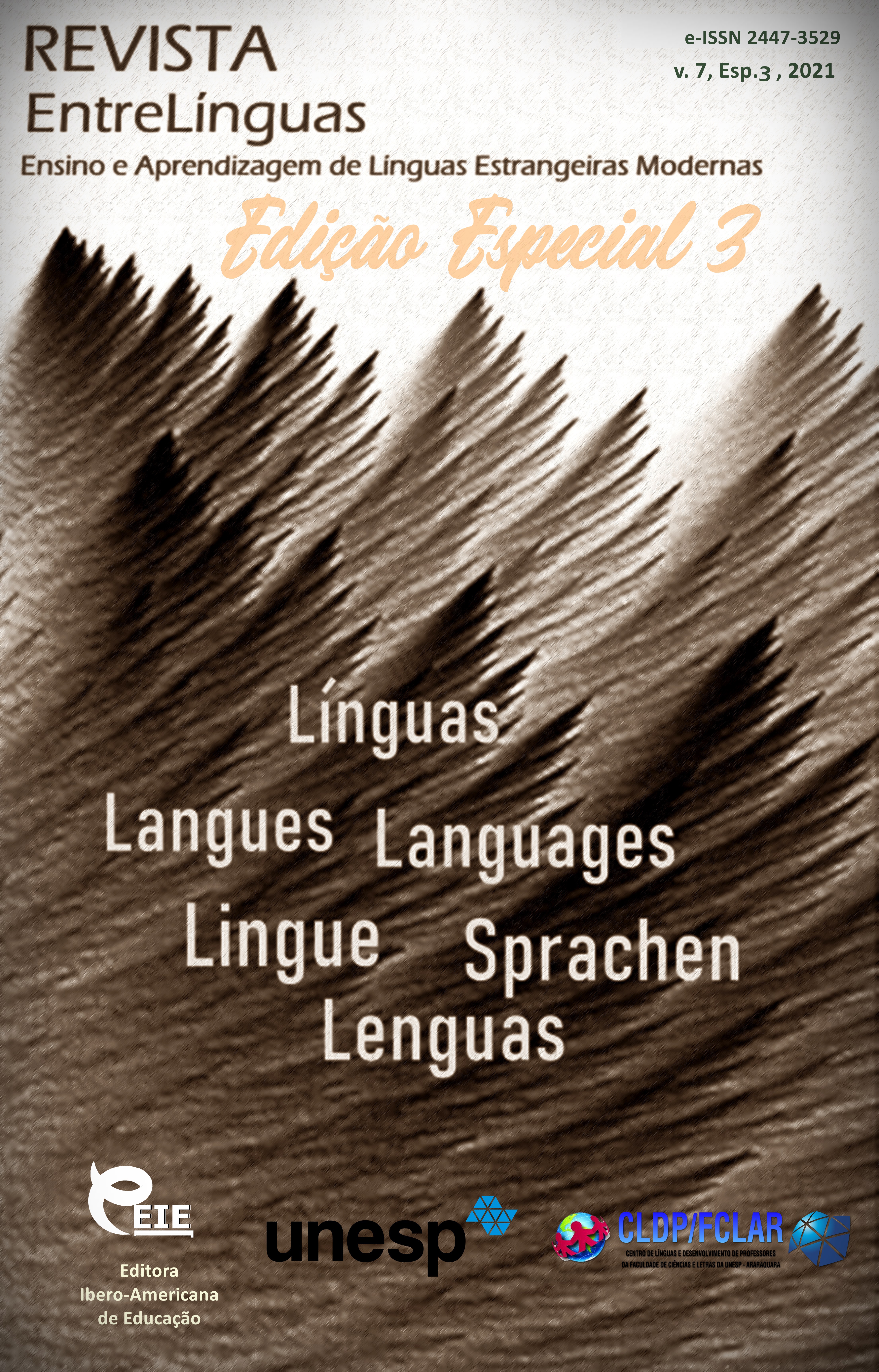Las características lingüísticas y las especificaciones de traducción de la nueva generación “p” de Victor Pelevin
DOI:
https://doi.org/10.29051/el.v7iesp.3.15730Palabras clave:
El idioma, La traducción, Postmodernismo, Victor Pelevin, El juego del lenguajeResumen
Los autores se centran en los rasgos lingüísticos que caracterizan una novela posmoderna sobre el ejemplo de la obra literaria Generación “P” de Victor Pelevin. En primer lugar, se destaca la imposibilidad de la invención de nuevos estilos y la idea de la necesidad de una combinación de diferentes estilos: palabras marcadas estilísticamente como palabras de jerga, léxico poco coloquial, palabras poéticas y arcaicas, modismos e incluso términos científicos, todos juntos crean una singularidad. estilo de la novela. En segundo lugar, se consideran los niveles de implementación del juego del lenguaje. Se analizan dos niveles de representación de juegos de lenguaje: la mezcla de estilos y la pérdida de figuratividad por unidades fraseológicas. En el artículo se examinan el contexto intertextual de la novela y un método común de posmodernismo conocido como "reescritura". Se analiza un fenómeno de juego de lenguaje e intertextualidad a partir de la traducción de la novela de Andrew Bromfield.
Descargas
Citas
GENETTE, G. Palimpsestes. La litterature au second degree. Le Seuil, 1997.
GOLIKOVA, G.; POMORTSEVA, N. The phenomenon of extension/contraction of the text: Images of nature in Ch. Brontë's novel janeeyre and its screen adaptations. Journal of Language and Literature, v. 5, n. 3, p. 153-157. DOI: doi.org/10.7813/jll.2014/5-3/282014
KHISAMOVA, V. N.; MOTYGOULLINA, Z. A.; MOULLAGALIEV, N. K. Expression of the fiction in the material of “The catcher in the rye” by David Salinger and its translation into the Tatar language. Journal of Language and Literature, v. 3, n. 6, p. 140-143. DOI: doi.org/10.7813/jll.2015/6-3/322015
KUGAEVSKIJ, A. Hudozhestvennaya interpretaciya tovarnogo diskursa v romane Viktora Pelevina Generation “P” [“Artistic interpretation of commodity discourse in the novel Generation “P” by Victor Pelevin”]. Kritika i semiotika, v. 9, p. 144-157, 2006.
LIPOVECKIJ, M. N. Russkij postmodernism [Russian postmodernism]. 1997.
MACÉ, M. L’essailitteraire, devant le temps, Cahiers de Narratologie, Prose d'idees: formesetsavoirs. Cahiers de géographie du Québec, 2008Available: https://journals.openedition.org/narratologie/499#quotation. Access: 20 Nov. 2020.
NESTEROVA, N. M.; POPOVA, Y. K. O specifike perevoda postmodernistskih hudozhestvennyh tekstov (na material proizvedenij A.Bajett i ih perevodovnarusskij yazyk) [On the specifics of the translation of postmodern artistic texts (based on the works of A. Bayett and their translations into Russian)]. Filologicheskie nauki. Voprosy teorii i praktiki, v. 2, n. 1, p. 151-157, 2017.
PELEVIN, V. Babylon. London: Faber, 2001.
PELEVIN, V. Generation “P”. EHKSMO. 2011.
POPOVA, E. Y. Literaturnye precedentnye fenomeny kak sredstva ehksplikacii postmodernistskih motivov illyuzornosti i absurdnostimira v tvorchestve V.Pelevina [Literary precedent phenomena as a means of explication of postmodernist motifs of the illusion and absurdity of the world in the work of V.Pelevin]. Seriya “Filologicheskie nauki”, v. 3, p. 9-19, 2011.
SOBOLEVA, N. P.; ZUBKOVA, O. S. Metaphor translation: russian and english-language taglines for feature-length films. Journal of Sociology and Social Anthropology, v. 10, n. 4, p. 192-197, 2019. DOI: doi.org/10.31901/24566764.2019/10.04.3112019
VASILOVA, L. R. et al. Analysis of translation of figures of speech into english, spanish and turkish. Opcion, p. 934-948, 2019.
ZHOLKOVSKIJ, A. K. Bluzhdayushchiesny: stat'I raznyhlet [Wandering dreams: articles from different years]. Azbuka: Azbuka-Attikus, 2016.
Publicado
Cómo citar
Número
Sección
Licencia

Esta obra está bajo una licencia internacional Creative Commons Atribución-NoComercial-CompartirIgual 4.0.
Os manuscritos aceitos e publicados são de propriedade da Revista EntreLínguas. Os artigos publicados e as referências citadas na Revista EntreLínguas são de inteira responsabilidade de seus autores.
Transferência de direitos autorais – autorização para publicação
Caso o artigo submetido seja aprovado para publicação, já fica acordado que o(s) autor(es) autoriza(m) a UNESP a reproduzi-lo e publicá-lo na EntreLínguas, entendendo-se os termos “reprodução” e “publicação” conforme definição respectivamente dos incisos VI e I do artigo 5° da Lei 9610/98. O artigo poderá ser acessado pela rede mundial de computadores (Internet), sendo permitidas, a título gratuito, a consulta e a reprodução de exemplar do artigo para uso próprio de quem a consulta, desde que haja a citação ao texto consultado. Essa autorização de publicação 328 EntreLínguas, Araraquara, v. 1, n .2, p. 323-328, jul./dez. 2015 não tem limitação de tempo, ficando a UNESP responsável pela manutenção da identificação do(s) autor(es) do artigo. Os artigos publicados e as referências citadas na Revista EntreLínguas são de inteira responsabilidade de seus autores.











